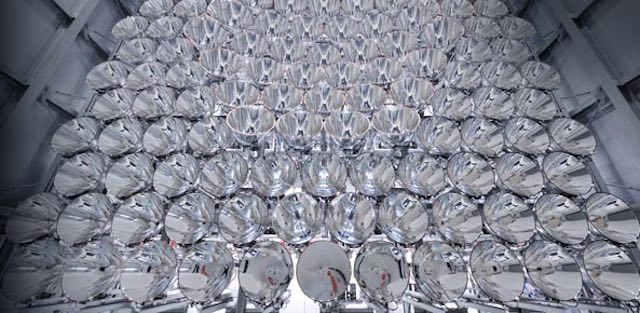The world’s largest ‘artificial sun’ was switched on this year, illuminating a brighter future for renewable energy.
The “Synlight” facility, as it’s called at the German Aerospace Center Institute for Solar Research in Jülich, is a 3-story building containing 149 Xenon short-arc lamps, like the ones that are used individually to illuminate large cinema screens and project your favorite blockbuster movies.
The scientists can focus these ‘radiators’ on a tiny area, 20 by 20 centimeters, and with Synlight’s 350-kilowatt array, the result is 10,000 times the intensity of solar radiation at the Earth’s surface. Temperatures at the target point of the lamps can reach up to 3,000 degrees Celsius, which can then be used to manufacture fuels, including hydrogen.
RELATED: All Cars Sold in Norway to be Electric by 2025
Sunlight in central Europe is unreliable and irregular, so an artificial Sun is the preferred choice for developing production processes for solar fuels. Periods of unfavorable weather and fluctuating sunlight hours might otherwise negatively impact tests. Relocating research facilities to more sunny regions only appears to offer an improvement in these conditions; even at these locations, the Sun never shines with a constant intensity. In addition, a test environment with precisely reproducible conditions is key to development work.
Scientists at the DLR Institute of Solar Research already managed to produce hydrogen using solar radiation several years ago, albeit on a laboratory scale. The size of these processes needs to be enlarged significantly to make them interesting for industrial applications, hence the objective of Synlight.
“Renewable energies will be the mainstay of global power supply in the future,” said DLR Executive Board Member Lemmer. “Fuels, propellants and combustibles acquired using solar power offer immense potential for long-term storage and the production of chemical raw materials, and the reduction of carbon dioxide emissions. Synlight will enhance our research in this field.”
Shine Some Light On This Story: Click To Share (Photo by German Aerospace Center Institute for Solar Research)




















